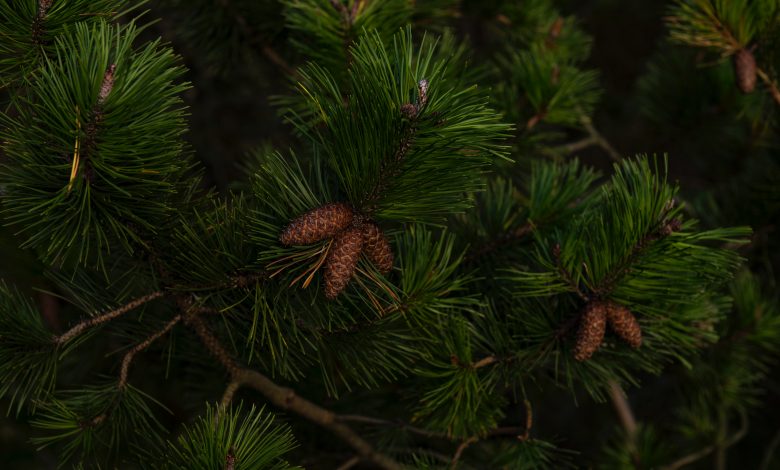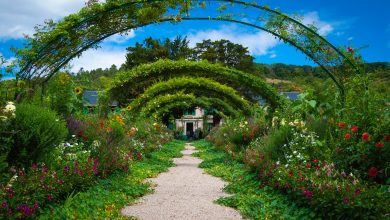12 Types of Pine Trees You Should Know

Pine trees are known for their piercing needles, delightful smells, and the ability to spruce up any landscape. Pines come in many shapes, sizes, and colors, although most are on the spectrum of green to blue. Today, there are approximately 126 species of confirmed pines and 35 species that are unresolved. Below, you will read about the origin and background of pine trees, along with 12 noteworthy species to consider for your landscape.
Origin of Pine Trees
Pine trees are members of the Pinus genus in the Pinaceae family, which is the largest and oldest conifer family. Conifers have been around for over 300 million years, and pine trees evolved from them over 150 million years ago. The genus Pinus is thought to be 100 million years old. Pine trees are prone to inter-species hybridization due to their long overlapping lifespans, significant population size, and wind pollination.
Botanical Information
Pines trees are evergreens that rarely take shrub form and can grow between ten and 260 feet tall. The majority of pines will grow between 50 and 150 feet tall. Exceeding their extraordinary height is their extensive lifespans. Pines are different from its cousins, fir, and spruce trees, but all are members of the conifer family.
To distinguish pines from firs and spruces, examine the needles. If there are two or more needles attached in a cluster to a branch, you are looking at a pine tree. You can also tell by rolling a needle in your fingers. Fir needles are flat, and spruce needles have four distinct edges. You should not be able to easily roll either very easily in your fingers. Christmas trees are much more likely to be fir or spruce trees rather than pines.
Lifespan
Pines will typically survive for 100 to 1,000 years. The pine with the longest lifespan is the Great Basin bristlecone, Pinus longaeva, and claims one of earth’s oldest living organisms, a species called Methuselah. This species can be seen in the California White Mountains and have a lifespan of over 4,600 years.
Foliage
Of the major common pines in North America, most bunches of between two and five needles. These needles make up the tree’s “leaf,” and these bunches of needles will last for about two years before falling to the ground. As the old needles die, new needles are formed as the tree continues its upward climb.
Bark
The appearance of the bark and limbs of a pine tree will depend on how often the tree is exposed to fire. Pines that have adapted from fires will have thicker, scaly bark and limbs. In comparison, a tree that is not exposed to fire will have a smooth surface.
Cones
Most pine trees have both male and female cones, but some are predominantly one sex over the other. Male cones are made for pollination and can be seen for a shorter period, usually in the spring. Despite being the smaller of the two at half an inch to two inches long, male cones produce a substantial amount of pollen each year. Female cones are the ones someone would typically think of when imagining a pinecone. They can take up to three years to mature and can grow as large as two feet long.
Each pinecone has spiraling scales containing two seeds each on the fertile scales. The seeds can be either wind-dispersed or bird-dispersed. At maturity, the cone will open up to release its seeds.
How to Grow Pine Trees
Pine trees grow most effectively in acidic soil and require efficient soil drainage. Sandy soil is usually preferred for most pines, but some, such as the lodgepole pine, can continue to grow well in poorly draining soil. Pines can be grown throughout U.S. hardiness zones 2-8, which excludes only Alaska and the warmest regions in the south. Pine trees can tolerate either shade or full sun.
Types of Pine Trees

Austrian Pine
Pinus nigra
Also known as the black pine, Pinus nigra are among the oldest pine tree varieties and have the growth to show for it. The Austrian pine can grow up to a modest 60 feet tall, but they can also grow massively wide, up to 40 feet. The black pine can be recognized by its groups of two needles per bundle.
Bristlecone Pine
Pinus aristate
Native to the Rocky Mountains, the bristlecone pine makes a fine addition to any landscape. It is a smaller species of pine that can be grown as a shrub or a small tree that grows between eight and 30 feet tall. Also referred to as the hickory pine, bristlecones are among the oldest living plants in the world, dating back over 4,000 years. Bristlecone pines have five needles per bundle.

Eastern White Pine
Pinus strobus
The eastern white pine is one of the most important species as it is relied upon for timber and is also used to beautify landscapes. It’s also a fast grower and has a lengthy lifespan. Eastern white pines can grow between 50 to 100 feet, but they adapt well to pruning and can be grown to smaller sizes. The eastern white pine has five lengthy needles per bundle.
Holford Pine
Pinus holfordiana
The Holford pine is a hybrid that features luxuriously delicate needles that can be made into ideal garlands around the holidays. The Holford pine is a cross between two tropical varieties: the Mexican white pine and the Himalayan white pine. Blue-green needles are a highlight of this fast-growing variety, which can grow up to two feet per year.
Joppi Jeffrey Pine
Pinus jeffreyi
Joppi is a dwarf version of the Jeffrey pine and is ideal for those wanting a smaller plant to provide year-round interest. The Joppi was discovered by Piet Vergelt in the Netherlands in a bed of Pinus jeffreyi seedlings, and he named it after his oldest son. Joppi grows spherically and can reach six feet tall over a ten-year growing period. It’s a densely packed pine that features eight-inch long curving needles that exude an enjoyable scent of lemon.

Korean Pine
Pinus koraiensis
The elegant Korean pine is an adaptable variety that performs well in cold conditions and can also tolerate moderate droughts. The seeds of the Korean pine are harvested and sold as pine nuts, most notably in northeastern China. It features long, tightly-packed bunches of five needles that are soft and light to the touch.
Mugo Pine
Pinus mugo
Sometimes referred to as a mountain pine, mugo pines have evolved into some of the hardiest species in the world. Originally from the windy mountains of central Europe, there are now 80 different cultivars of mugo pines. The mugo is the smallest pine on this list, growing to eye level at its greatest height. This variety features deep green needles and is ideal for creating a focal point in your garden.
Pinyon Pine
Pinus edulis
The pinyon pine is native to southwestern North America and can be seen most frequently in New Mexico. Pinyons yield edible nuts, which are widely eaten as snacks and used as ingredients in New Mexico cuisine. When burned, pinyon wood produces an exceptionally pleasant aroma. Pinyon nuts are also used to create particularly tasty flavors of coffee. The two-needle pinyon pine is the official state tree of New Mexico.
Scots Pine
Pinus sylvestris
The only pine to appear on this list that receives a negative recommendation is the Pinus sylvestris, commonly referred to as a Scots pine or Scotch pine. The reason to avoid this variety is due to its susceptibility to pests and diseases. Typically, when not planted in its native Europe or Asia, the Scots pine must be removed. In its native region, the Scots pine has smooth, attractive bark and can grow up to 60 feet tall and 40 feet wide.

Sugar Pine
Pinus lambertiana
The tallest pine tree in the world is the sugar pine. Growing as tall as 200 feet high, the sugar pine has cones to match its height, reaching up to two feet long. The sugar pine is native to Mexico, California, Nevada, and Oregon and is also referred to as a giant pine. Bundles include five needles.
Swiss Stone Pine
Pinus cembra
The Swiss stone pine is densely packed with long, attractive bundles of needles and is ideal for smaller landscapes. Native to the mountains of Europe and Asia, the Swiss pine can grow up to 40 feet tall and 20 feet wide. It provides edible fruit for birds, and its soft, blue-green needles provide year-long interest.
Torrey Pine
Pinus torreyana
A rare pine and endangered species is the Torrey pine. Native to southern California and most notably San Diego, the Torrey pine is a broad, arching tree that grows up to 50 feet tall in the wild with five needles per bundle. Torrey pines grow natively in a narrow stretch along the California coast, and they are believed to be only 100 living trees in the world. The Torrey pine gains special interest when it has been exposed to coastal winds, creating uniquely twisted shapes that can resemble especially large bonsai trees.



